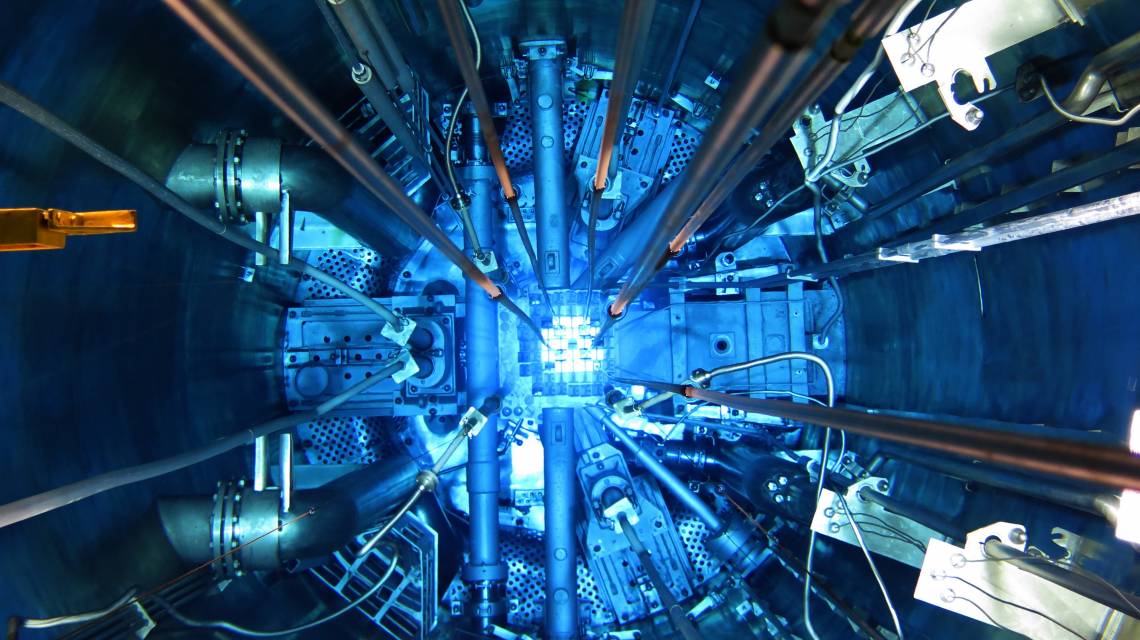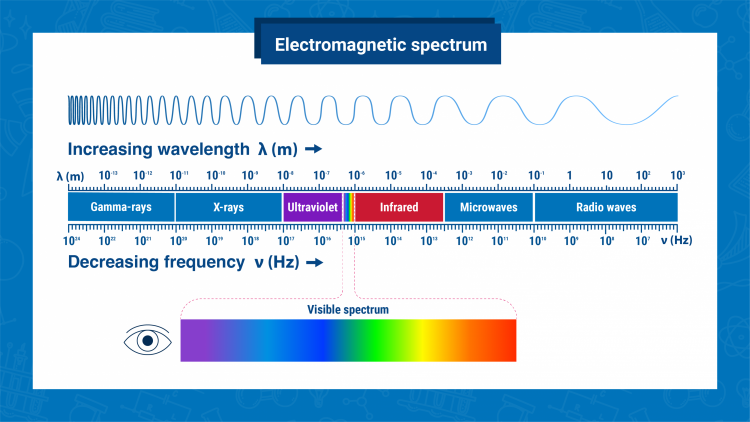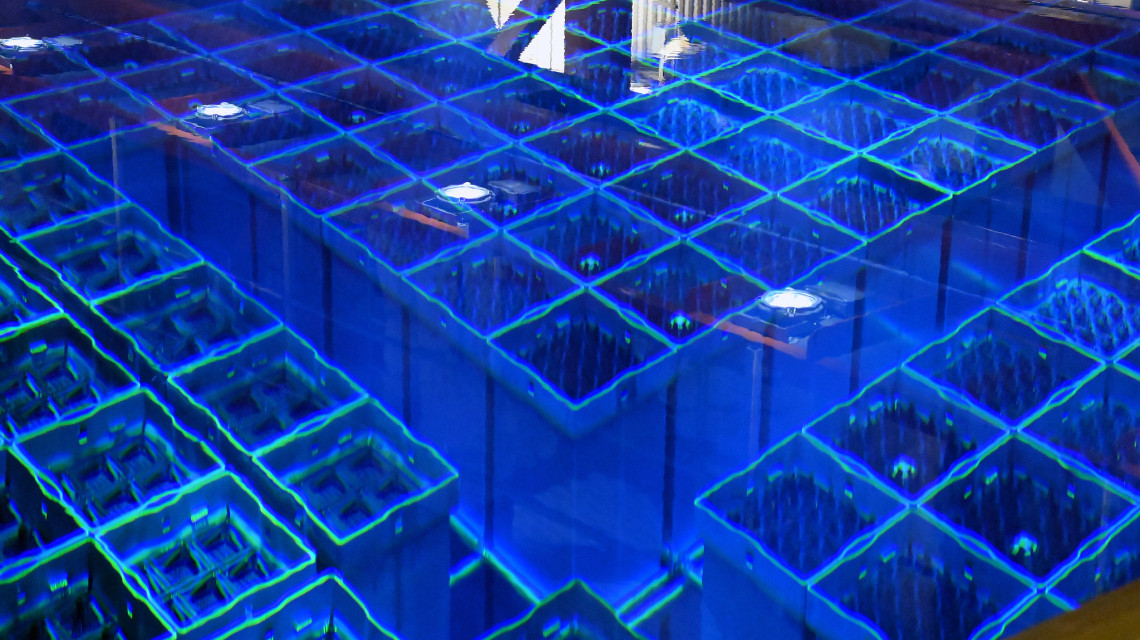Cherenkov radiation is a form of energy that we can perceive as a blue glow emitted when the electrically charged particles that compose atoms (i.e. electrons and protons) are moving at speeds faster than that of light in a specific medium. Cherenkov radiation is named after the 1958 Physics Nobel Prize laureate, Pavel Cherenkov, who shared the award with Ilya Frank and Igor Tamm, for being the first to experimentally demonstrate and explain this glow.
How can something travel faster than light?
Nothing can travel faster than the speed of light in a vacuum. However, in other mediums, particles can potentially move faster than light. For instance, while in water, light would instantly slow down to 75% of its normal speed, but there are other particles that don't slow down as much and end up moving faster than light. Whenever that happens, a blue or violet glow occurs.

Cherenkov radiation is present, among others, in the water that surrounds the fuel in nuclear reactors. Electrically charged particles moving at very high speeds are a by-product of the reaction inside the reactor. (Photo: IAEA)
Why is it blue?
When charged particles moving faster than light travel in, for example, water, they perturb the energy equilibrium of the atoms that are in their way. In order to regain equilibrium, those atoms release photons - the types of particles that compose visible light, creating a "shock-wave" of visible light. It is the same effect as the sonic boom when faster-than-sound movements occur, but on the light spectrum.
The different colours that human eyes perceive are actually different types of waves made up of photons.
Due to the high energies at play during Cherenkov radiation, the photons travel as waves that have high frequencies and short wavelengths, which are typical of ultraviolet violet and blue colours. The higher the frequencies and the shorter the wavelengths are, the bluer or more violet the light appears to the human eye. Ultraviolet is not visible to the human eye but can be captured with specific tools measuring the Cherenkov radiation.
What are some of the applications of Cherenkov radiation?
Cherenkov radiation usually occurs in radioactive materials immersed in water. Nuclear material, of which radioactive material is a by-product, can be used for peaceful purposes (such as energy production), but also for nuclear weapons.
The IAEA's mandate includes verifying that nuclear material and facilities remain in peaceful use. States declare to the IAEA the location, amount, chemical composition, physical form and use of their nuclear material under their safeguards agreements, and the IAEA verifies that the information reported by the State is complete and correct.
By using specialized equipment, namely The neXt generation Cherenkov viewing devices (XCVDs) or digital Cherenkov viewing devices (DCVDs), that captures the light emitted, Nuclear Safeguards Inspectors can analyse nuclear material at nuclear facilities and other locations and compare that data to the information reported by the State. For instance, they can measure the Cherenkov radiation present in the ponds where the spent fuel from nuclear reactors is stored and determine whether or not the reported amount of spent nuclear fuel is accurate. In this way, they can detect if any of the nuclear material from spent nuclear fuel has been diverted from peaceful use.
Learn more about the use of the nuclear safeguards techniques and equipment here.
What is the role of the IAEA?
- Through a set of technical measures, or safeguards, the IAEA verifies that States are honouring their international legal obligations to use nuclear material and technology only for peaceful purposes. Its independent verification work allows the IAEA to play an indispensable role in preventing the spread of nuclear weapons.
- IAEA safeguards are an essential component of the international security system. The Treaty on the Non-Proliferation of Nuclear Weapons (NPT) is the cornerstone of global efforts to prevent the spread of nuclear weapons. Under the Treaty's Article III, each non-nuclear weapon State is required to conclude a comprehensive safeguards agreement with the IAEA.
- The field of nuclear technology is developing continuously. The amount of nuclear material and the number of nuclear facilities under IAEA safeguards are growing steadily. Read the IAEA key safeguards facts in 2021 here.









